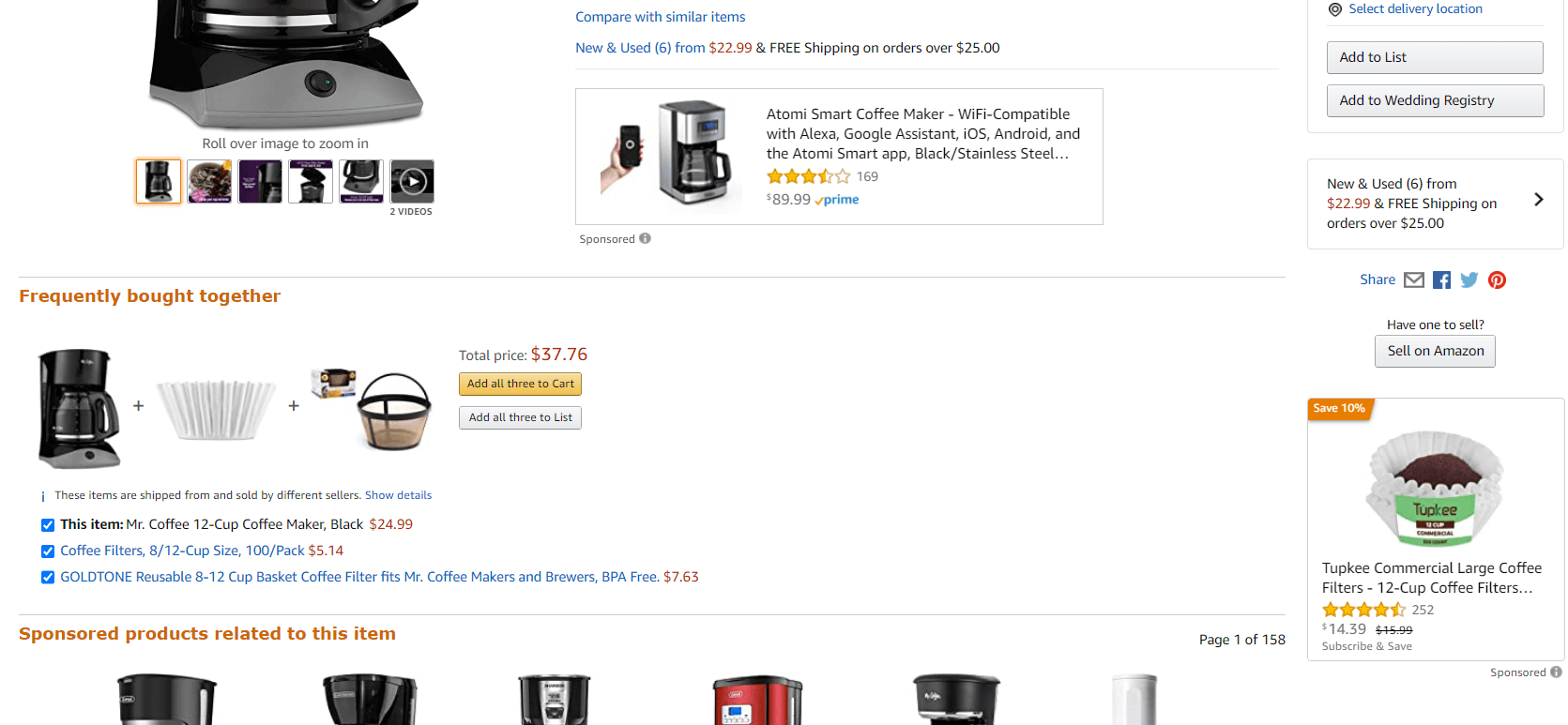
Amazon Releases Enhancements to Sponsored Display Ad Offering
Last week, Amazon released several advancements to its Sponsored Display ad offering, which has been in beta since September 2019.
With these advancements to the Sponsored Display capabilities, Amazon expands the ability of sellers and brands to take advantage of Amazon’s expansive audience pool. This equally gives more control to brands and sellers to drive traffic not just at the keyword level, but also at the audience level.
Amazon’s core advertising products have been in paid search, consisting of Sponsored Products and Sponsored Brands, but these haven’t had any targeting beyond keywords. Amazon’s play in enhancing targeting, more flexible optimization, and more granular reporting suggests that Amazon is pushing a renewed effort to grow investment up the funnel by making it easier and more efficient to achieve positive results.
The improvements come in three key areas of the advertiser experience: targeting, bidding flexibility, and reporting:

The Basics: What is Sponsored Display?
Sponsored Display is an advertising product that lives within the Amazon Advertising Console. It can be thought about as a lite version of Amazon’s broader DSP offering available for Amazon Vendors and Amazon Sellers who are brand registered. The Sponsored Display placements allows marketers to reach and re-reach relevant audiences, both on and off Amazon through the Ad Console.
Depending on targeting, these ads run in both desktop, mobile and across the Amazon site. Additionally, ads can be configured to run offsite across third-party publishers. Unlike the DSP where you can run custom creatives, Sponsored Display campaigns auto-generate creatives to help incite purchase and direct to the product detail page.

Targeting
Sponsored Display allows two distinct types of targeting: audience and product, both on Amazon and off.

Audience targeting allows brands to choose which shoppers they are trying to reach with its products. Within this, the brand can choose audiences based on interests or based on views.
Interest-based audiences are shoppers who have shown interest in certain categories or products relevant to a brand’s selected product. These ads run across desktop, mobile, and app with an auto generated creative. Headline and logo can be customized.
View-based audience targeting allows brands to re-engage shoppers offsite from Amazon who previously viewed your products or those like yours. A given product will be shown to a shopper who have viewed your product detail page or similar products over the last 30 days, however this excludes shoppers who may have already purchased similar products.
Product targeting shows ads to shoppers who are visiting products or categories that are selected by campaign. These can run across desktop, mobile, and app for onsite Amazon.
What this means for Brands
Sponsored Display is essentially a Display unit with CPC pricing, offering excellent value but limited targeting. These additions help improve the ad unit and allow for brands to smartly make tweaks to drive additional efficiencies. These units are significantly more powerful than the Product Display Ads they’ve replaced, and brands should generally consider devoting at least as much of their Search budget to SDAs as they did to PDAs, though most brands will see value in increasing that considerably.
For any question please reach out to Georgina Morgan, Director, Amazon Advertising: Georgina.Morgan@reprisedigital.com
Our latest digital insights






